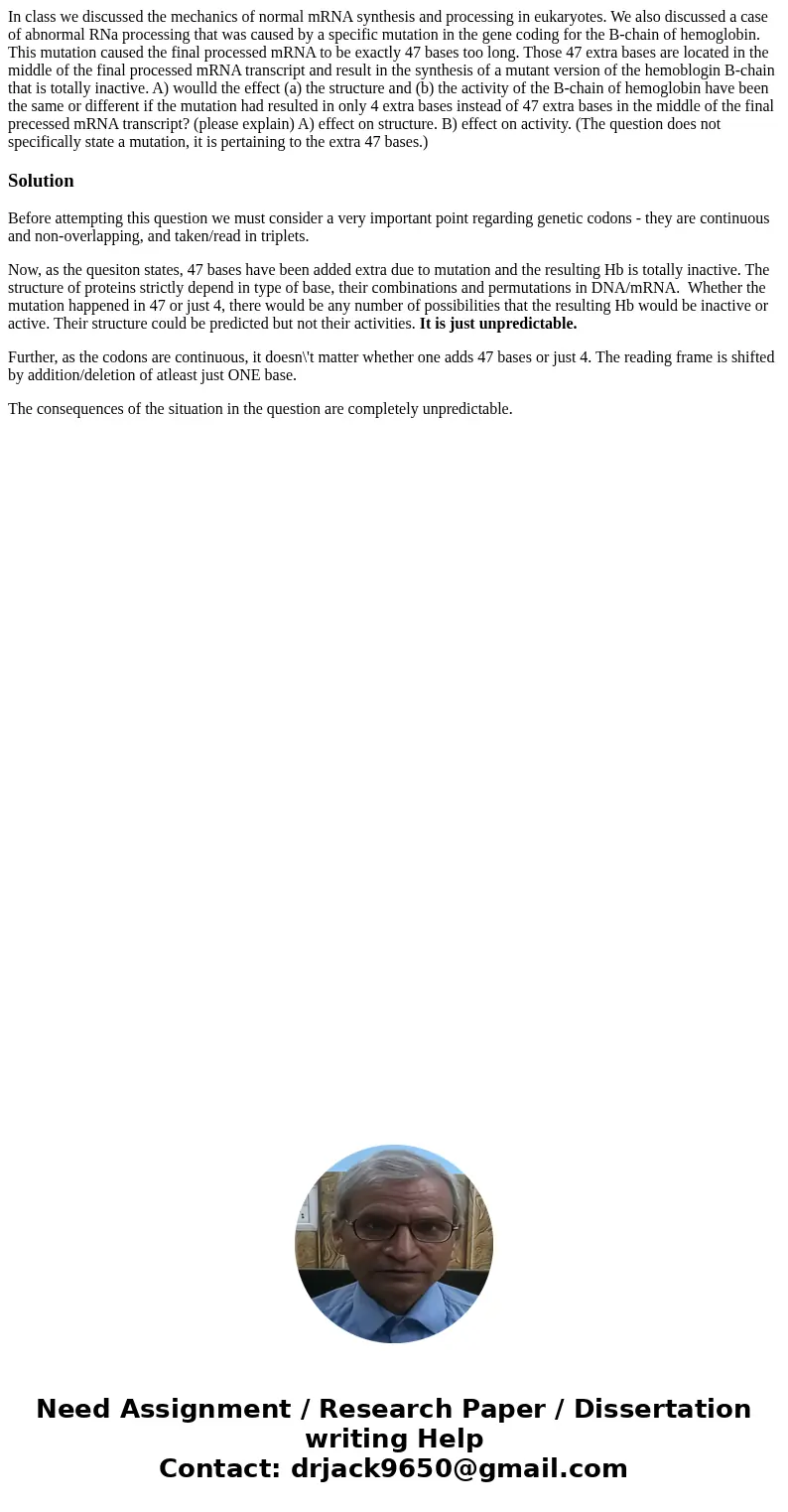In class we discussed the mechanics of normal mRNA synthesis
In class we discussed the mechanics of normal mRNA synthesis and processing in eukaryotes. We also discussed a case of abnormal RNa processing that was caused by a specific mutation in the gene coding for the B-chain of hemoglobin. This mutation caused the final processed mRNA to be exactly 47 bases too long. Those 47 extra bases are located in the middle of the final processed mRNA transcript and result in the synthesis of a mutant version of the hemoblogin B-chain that is totally inactive. A) woulld the effect (a) the structure and (b) the activity of the B-chain of hemoglobin have been the same or different if the mutation had resulted in only 4 extra bases instead of 47 extra bases in the middle of the final precessed mRNA transcript? (please explain) A) effect on structure. B) effect on activity. (The question does not specifically state a mutation, it is pertaining to the extra 47 bases.)
Solution
Before attempting this question we must consider a very important point regarding genetic codons - they are continuous and non-overlapping, and taken/read in triplets.
Now, as the quesiton states, 47 bases have been added extra due to mutation and the resulting Hb is totally inactive. The structure of proteins strictly depend in type of base, their combinations and permutations in DNA/mRNA. Whether the mutation happened in 47 or just 4, there would be any number of possibilities that the resulting Hb would be inactive or active. Their structure could be predicted but not their activities. It is just unpredictable.
Further, as the codons are continuous, it doesn\'t matter whether one adds 47 bases or just 4. The reading frame is shifted by addition/deletion of atleast just ONE base.
The consequences of the situation in the question are completely unpredictable.

 Homework Sourse
Homework Sourse